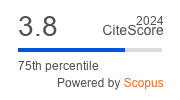Article | Open Access
Mapping the Flow of Forest Migration through the City under Climate Change
| Views: | 3720 | | | Downloads: | 1830 |
Abstract: Rapid climate change will create extreme problems for the biota of the planet. Much of it will have to migrate towards the poles at a rate far beyond normal speeds. In this context, the concept of assisted migration has been proposed to facilitate the migration of trees. Yet current practices of assisted migration focus on “where tree species should be in the future” and thus have many uncertainties. We suggest that more attention should be paid on the flow of forest migration. Therefore, this study develops a three-step methodology for mapping the flow of forest migration under climate change. Since the migration of trees depends on the activities of their seed dispersal agents, the accessibility of landscapes for dispersal agents is mainly considered in this study. The developed method combines a least-cost path model, a graph-based approach, and a circuit theory-based model. The least-cost path model is applied to map the movement of dispersal agents, based on which graph-based indices are used to evaluate the accessibility of landscapes for dispersal agents, which in turn is used as the basis for circuit theory-based modelling to map the flow of forest migration. The proposed method is demonstrated by a case study in the Greater Manchester area, UK. The resulting maps identify areas with high probability of climate-driven migration of trees.
Keywords: climate change; forest migration; urban landscape; seed dispersal
Published:
© Qiyao Han, Greg Keeffe. This is an open access article distributed under the terms of the Creative Commons Attribution 4.0 license (http://creativecommons.org/licenses/by/4.0), which permits any use, distribution, and reproduction of the work without further permission provided the original author(s) and source are credited.


